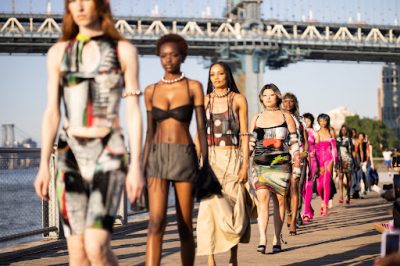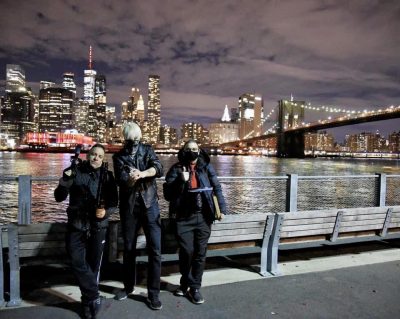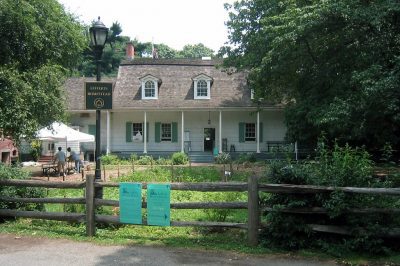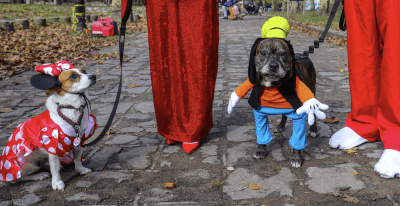Tchotchke Gallery interior (Thomas Brown)
From URL to IRL: Online gallery Tchotchke finds a physical home in East Williamsburg
Founders Danielle Dewar and Marlee Katz wanted to create a space that felt more welcoming and inclusive than typical galleries
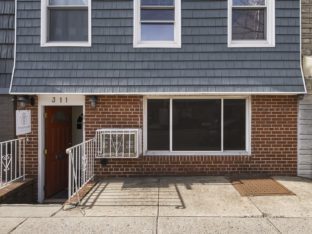
The Tchotchke Gallery exterior (Thomas Brown)
Tchotchke Gallery began as a solution to a problem that arose during the pandemic. The digital art platform gave artists from all over the world the chance to exhibit and sell their art in a time when museums, galleries, openings and events were abandoned.
Three years on, as digital fatigue has more people than ever yearning for tangible, real life experiences, Tchotchke Gallery has opened its doors to its first brick-and-mortar location.
Founders Danielle Dewar and Marlee Katz launched Tchotchke in 2020 as an online experiment. It gave them a chance to flex their muscles and draw upon their extensive experience in the art world. Born from lofty goals, Dewar and Katz’s digital gallery succeeded beyond their expectations. In 2022, the website got over 36,000 visits, and experienced 93 percent year-over-year growth. So it makes sense to finally lay down some roots in New York City.
Located at 311 Graham Ave, Tchotchke Gallery is a small yet inviting space nestled below an astrologer’s office and next to an ice-cream parlor in a fairly nondescript house. On January 10, the night of the opening and the launch of their inaugural show, “Homecoming,” sharply dressed attendees — many of whom were friends, acquaintances and fellow creatives — spilled onto the prickly, cold street as inside the gallery was heaving with people.
A new painting of a Shrek-like, sad girl thirst trap called “Admin Reveal” by Brooklyn-based artist Elena Redmond is the first piece you see upon entering, exuding millennial ennui. Then there’s the powdery-pastel work of Debra Koo, Josiah Ellner’s inspiring ode to fall, and a snapshot of Japan from Rachel Tarrevechia’s collection. Cans of rosé and IPAs flowed freely, as animated attendees gawked at the bright, irreverent art that, despite filling the walls, was difficult to see through the clusters of people.
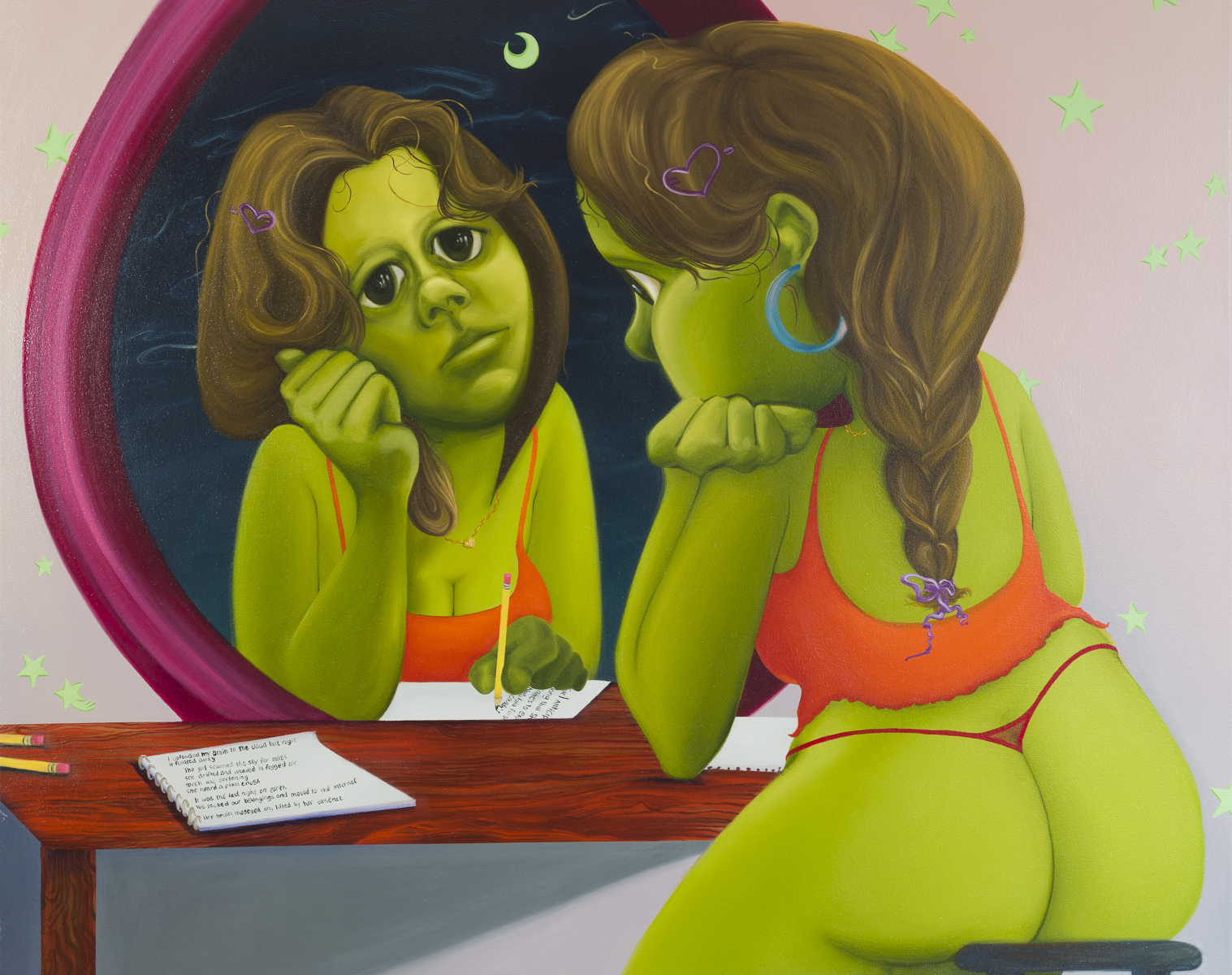

‘Admin Reveal’ by Elena Redmond
This is exactly what Dewar and Katz wanted when they envisioned Tchotchke Gallery.
Dewar, who’s from North Carolina and grew up in a single-mother household, was encouraged to take on a “safe” career path, while Katz grew up in Wisconsin, always being encouraged to create and make art. Dewar went on to work at blue-chip galleries in Manhattan, honing her curatorial skills, and Katz advanced at numerous galleries and advisory firms where she built thoughtfully curated fine art collections. Eventually, they wound up at the same place, working together at Edward Tyler Nahem Fine Art in Manhattan. They found that despite a difference in backgrounds and experiences, they shared a common goal to challenge the elitist conventions of traditional art spaces.
“We know what it feels like to walk into a gallery and feel unwelcome,” Dewar tells Brooklyn Magazine. “This feeling inspired us to do this in the first place. We never want someone to feel intimidated. Inclusivity is paramount.”
Brooklyn Magazine chatted with Dewar and Katz following Tchotchke’s opening night to discuss the shift from URL to IRL, democratizing art spaces, and how they hope to bring this all together in East Williamsburg.
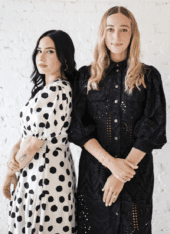

Dewar, left, and Katz (Thomas Brown)
Where do you get your passion for exhibiting and curating art?
Marlee Katz: I have always been a creative person. Throughout my education, creativity and the act of making were always encouraged. While pursuing my undergraduate degree, I took a summer course called “Art in New York,” at FIT and fell in love with the New York Gallery scene. I remember seeing a Jeff Koons retrospective at the old Whitney and exploring the galleries on the Lower East Side and Chelsea and knew I had to get to New York to further my education and pursue the field further.
Danielle Dewar: One of my first vivid childhood memories was a short-lived stint taking private art lessons from a local artist in my hometown. I was in kindergarten and loved it but it wasn’t something a single-mother household could continue affording me. From there I joined the art club at my elementary school and won various school competitions; however, I decided to take a break from art once I reached high school as traditional academia was encouraged along with a “safer” career path. I did, however, end up double majoring in undergraduate, one concentration of which included studio art. From there, my relationship with creating art has been more on the backend while I’ve found my voice and passion for exhibiting artists that inspire me. I think having a practice of my own has definitely proved to be beneficial in the curatorial process as well.
How do your backgrounds, upbringings, and experiences inform Tchotchke?
Katz: Both Danielle and I grew up in Wisconsin and North Carolina, where being warm and welcoming was inherent to our culture. In addition, we both studied fine art and have an understanding of materials, time, and processes that go into creating an artwork. Our roots and our ability to relate to artists on both a personal and a professional level aided in informing Tchotchke Gallery’s mission.
How did you come to the decision to go from URL to IRL?
Dewar: Marlee and I make it a point to have bi-annual meetings with each artist on our program to discuss both long-term and short-term goals. During these chats, a common objective we found across the board for each of our artists was the desire to show in New York City. Opening a physical space here was something we never took lightly and definitely seemed impossible at times. However, we knew that this was something we had to do to continue putting our artists first. A physical space in the city was also certainly a mutual goal of ours as well, even taking the artists out of the equation, as it marks a turning point in the trajectory of the gallery and our careers.
What are your hopes for this new physical iteration of Tchotchke?
Katz: With the physical space, we hope to provide more opportunities for our artists, further establish a sense of community in the art world as well as in East Williamsburg, and help people feel comfortable walking into a gallery and having a conversation with the people running it. Approachability and inclusivity are so important to us.
There’s been communal fatigue when it comes to online experiences as a result of the pandemic. Everyone is hungry for something personal, real, and tangible. Have you seen this manifest in how people interact with art?
Dewar: We’ve continuously heard and agreed with the sentiment that nothing beats seeing art in person. However, operating primarily in the digital space until very recently has tested our creativity in achieving these presentations. I think this background has given us an interesting perspective on curating art and making it accessible globally. We definitely pride ourselves in connecting artists with collectors who resonate with their work and often facilitate and sit in on digital studio visits, which is something we will continue moving forward, especially with our international clients. From our experience, “digital” and “personal” don’t have to be mutually exclusive but the isolation that inherently comes along with a digital world does add an extra layer of difficulty to achieve connection.
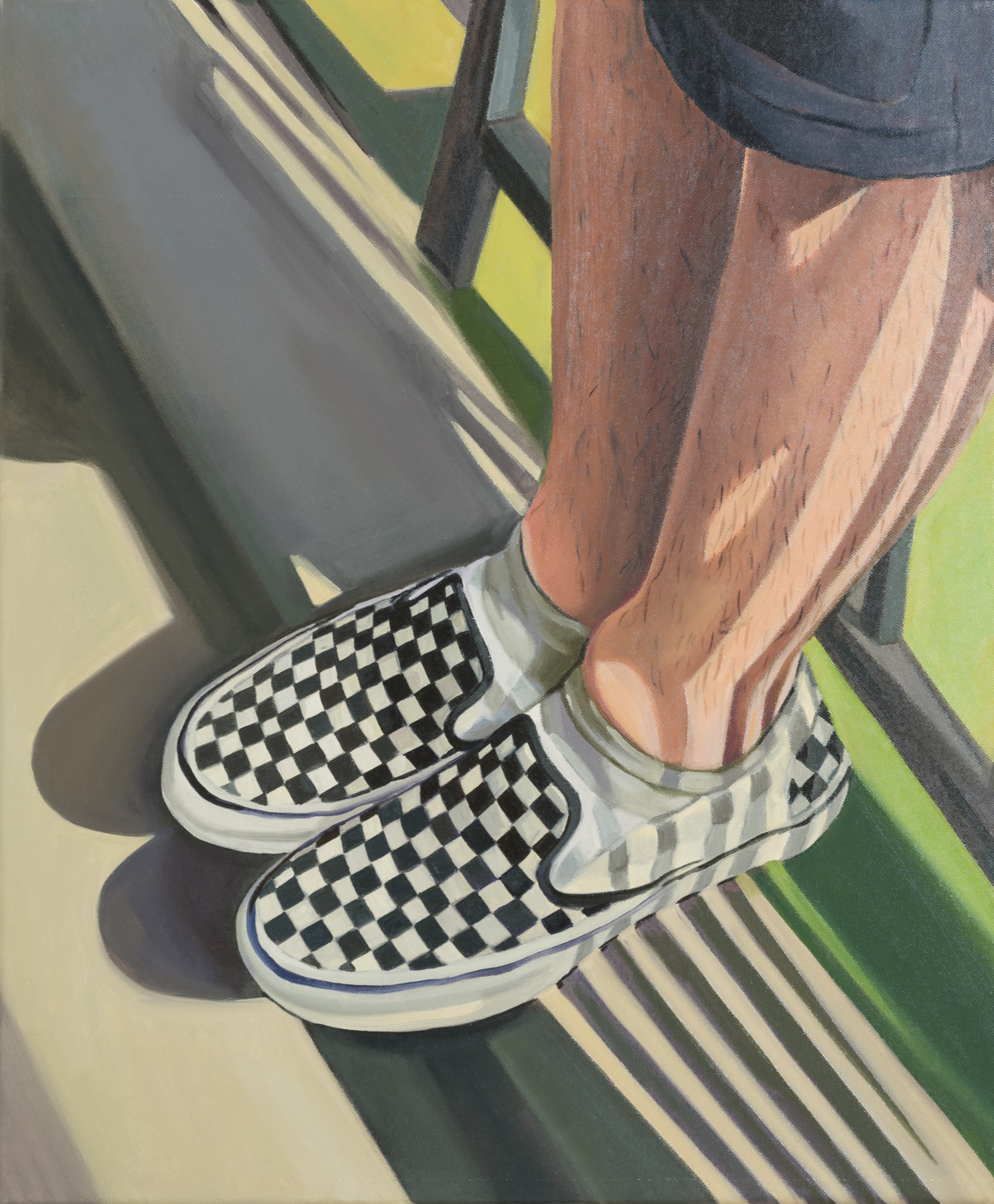

‘Vans’ by Debra Koo (Thomas Brown)
What are the tenets of Tchotchke?
Dewar: Inclusivity is paramount. We both know what it feels like to walk into a gallery and feel unwelcome. This feeling inspired us to do this in the first place. We never want someone to feel intimidated to pop in, say hello, and ask questions. Support is definitely another pillar of Tchotchke. We want our artists to know that we will always go to bat for them and do everything we can to help them succeed. Above all, community is important to us. Marlee and I both love collaborating with local businesses to further garner name recognition for our artists and for Tchotchke as a gallery.
The opening night felt like a classic New York Tuesday night. Lots of creatives sardined into a room where everyone loosely knew each other as free beer and rose flowed. It felt organic and local. How do you plan to continue this energy?
Katz: Our opening focused on our artists, our friends, and people from the community. The location we have placed ourselves in organically fosters this energy. East Williamsburg holds a creative community full of artists and small businesses like ourselves and providing everyone a place to come together to celebrate this notion will allow for continued success.
Dewar: With us focusing so heavily on community, you can expect the same vibes and energy for openings to come. We are lucky enough to have relationships with so many artists in the neighborhood, who we consider friends that the turnout definitely seemed natural for us. We make it a point to interact with artists we find inspiring and try to do as many quality studio visits as possible each month.
Can you tell me about the artists presented for the opening? How did you decide to show their work?
Katz: The four artists in “Homecoming” are on our gallery program. Over the past two years, Danielle and I have built strong relationships with each of these artists with the paramount goal of helping to grow and support their practice. “Homecoming” is both an homage to Tchotchke finding its permanent home and also a homecoming and celebration of the artists on our program.
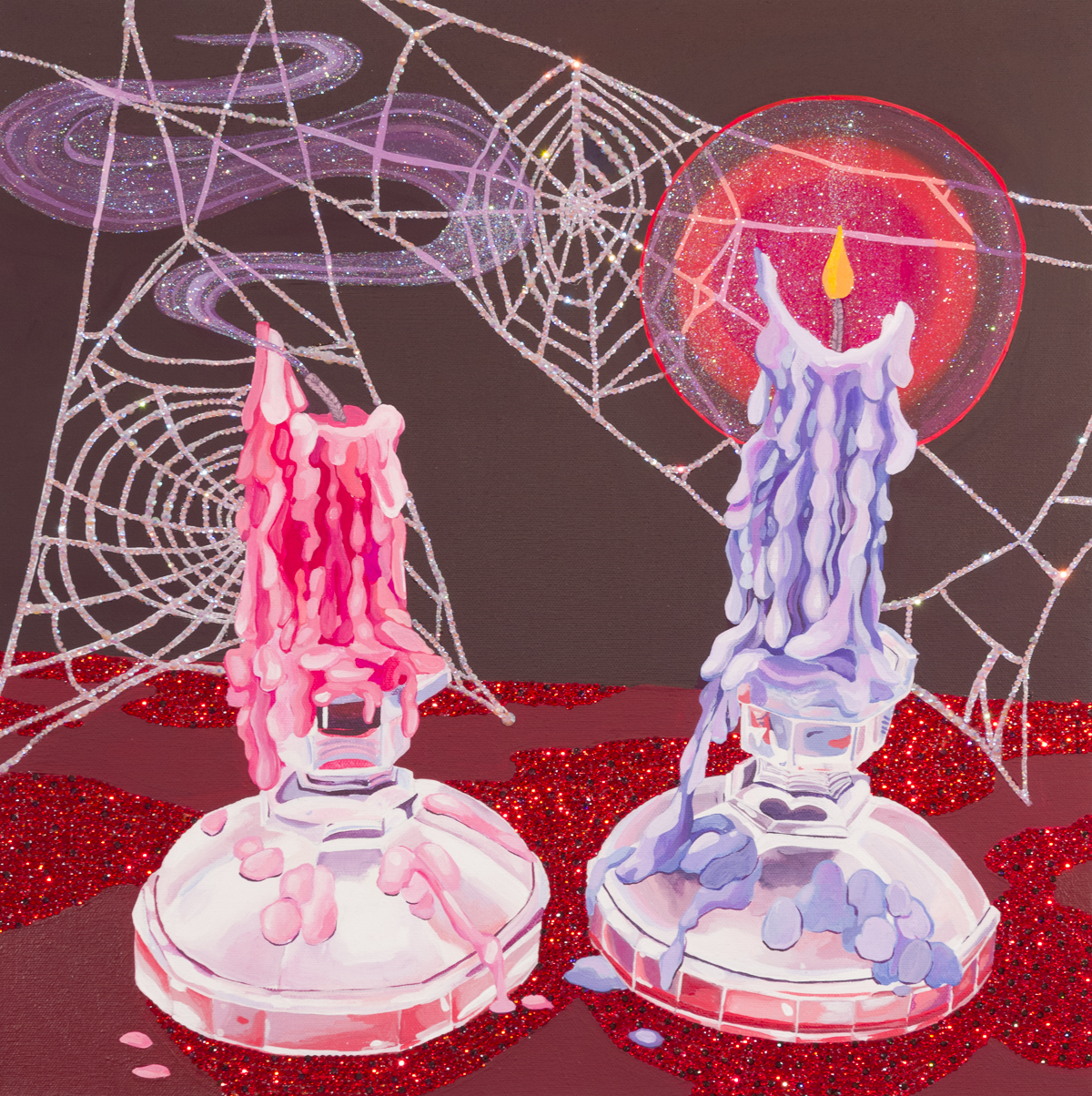

‘Séance’ by Rachael Tarravechia (Thomas Brown)
Why did you choose East Williamsburg as a location for your first physical location?
Katz: East Williamsburg was an easy choice for Danielle and I. We both reside in the area and many of the artists we work with live and paint nearby. Our goal was to find a home and foster a sense of community for our artists. We hope to make art more accessible and will continue to show artists that live in the area. Not many galleries can be found in Brooklyn, yet most of the artists are living here. We hope this inspires galleries to look beyond Manhattan and to further build the community that the artists are already working in.
Tchotchke is a Yiddish word. What inspired you to use this to represent your brand?
Katz: Tchotchke is a Yiddish word for a collectible item that often has little monetary value but high sentimental value. We wanted to play on this word and redefine the sentiment around value. Collecting and engaging with art is a highly sentimental, meaningful experience, and the intrinsic value of an artwork ought to be derived from that.
What do you have planned for 2023?
Katz: We have our entire year planned out. Next month we will be showing a Detroit-based artist named Danny Sobor and after that our very own Debora Koo will have a solo show with us. We are presenting some familiar faces along with a lot of new faces in our space this year and are very excited!
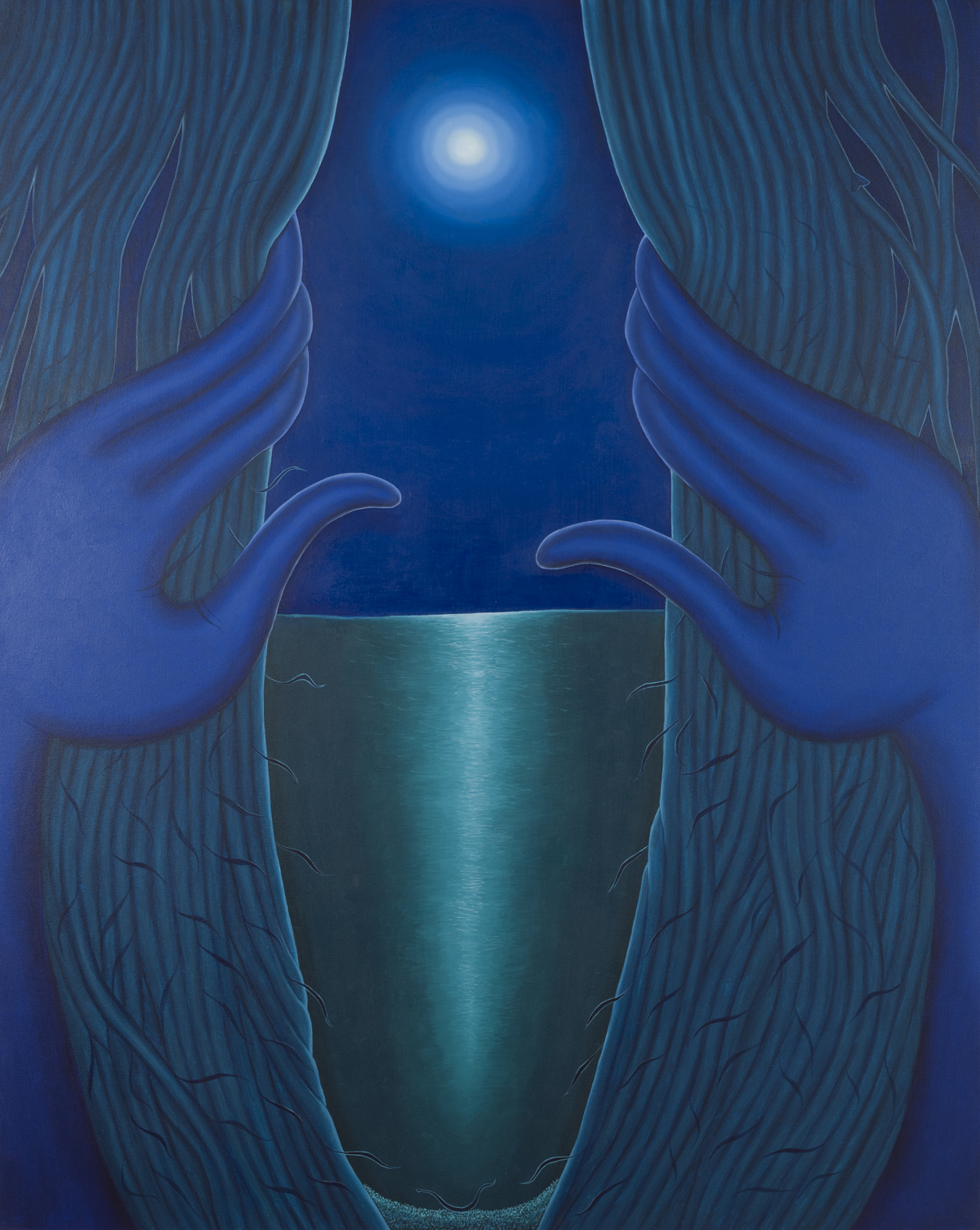

‘Sleepover on the Island’ by Josiah Ellner (Thomas Brown)
“Homecoming” will run from January 10 to February 11, 2023.
You might also like 

















